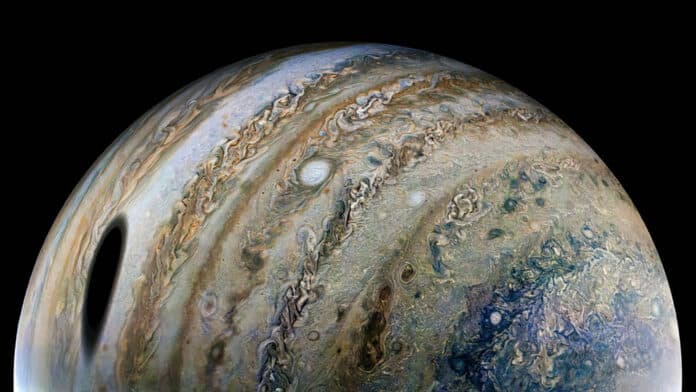On February 25, 2022, NASA’s Juno spacecraft observed Ganymede cast a sizable dark spot on Jupiter during its 40th close flyby. An observer at Jupiter’s cloud tops within the oval shadow would experience a total eclipse of the Sun, says NASA.
As a result of JunoCam’s proximity to Jupiter, Ganymede’s shadow seems particularly large in this view. The Juno spacecraft was 15 times closer to Jupiter than Ganymede, which orbits the planet at a distance of roughly 666,000 miles (1.1 million kilometers) at the time the raw image was taken, flying roughly 44,000 miles (71,000 kilometers) above the tops of the planet’s clouds.
Citizen scientist Thomas Thomopoulos created this enhanced-color image using raw data from the JunoCam instrument.
A viewer within the oval shadow at the summits of Jupiter’s clouds would witness a complete eclipse of the Sun. Jupiter experiences total eclipses more frequently than Earth does for a number of reasons.
Jupiter has four main moons, or Galilean satellites, that often orbit the Sun: Ganymede orbits the Sun once every seven days, Europa twice a day, and Io four times. Furthermore, Jupiter frequently experiences moon shadows because its moons orbit in a plane that is near to Jupiter’s orbital plane.
